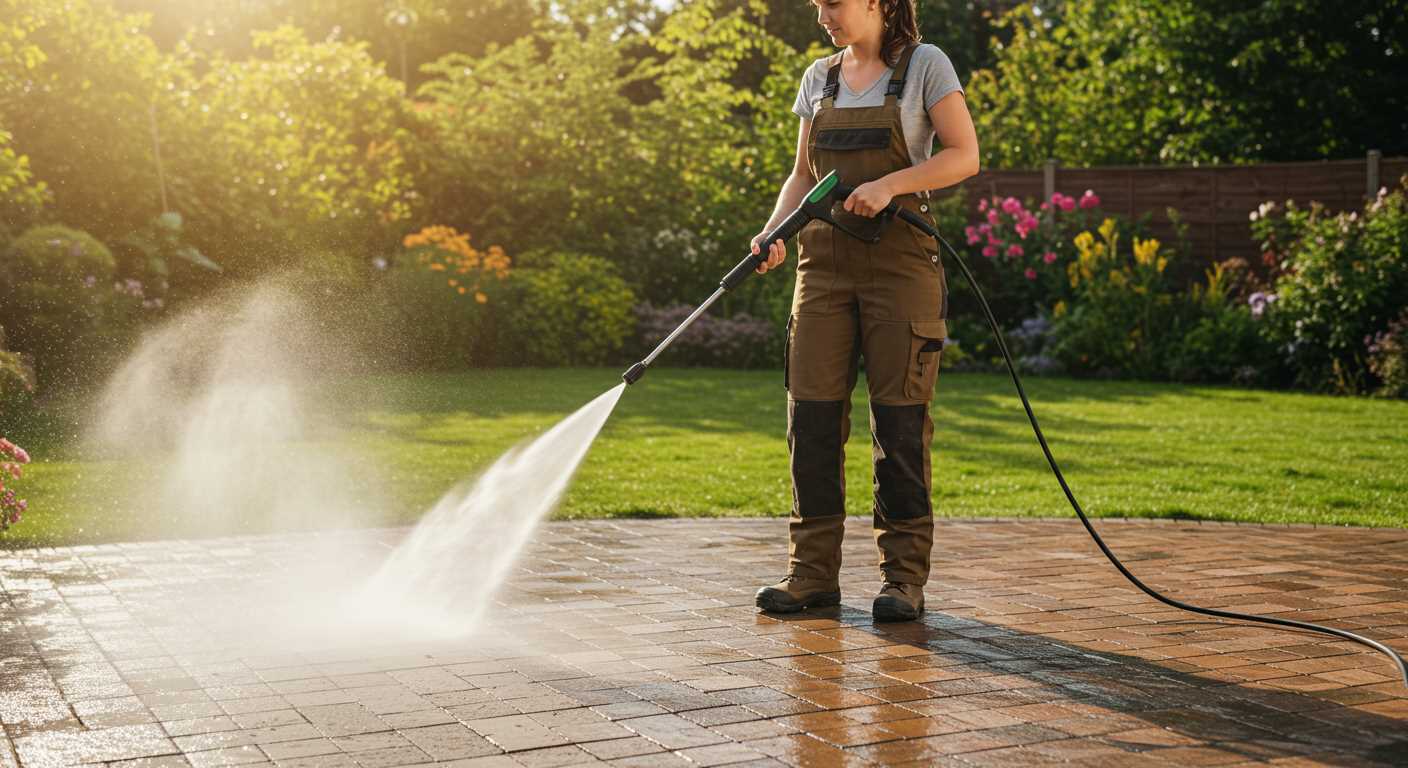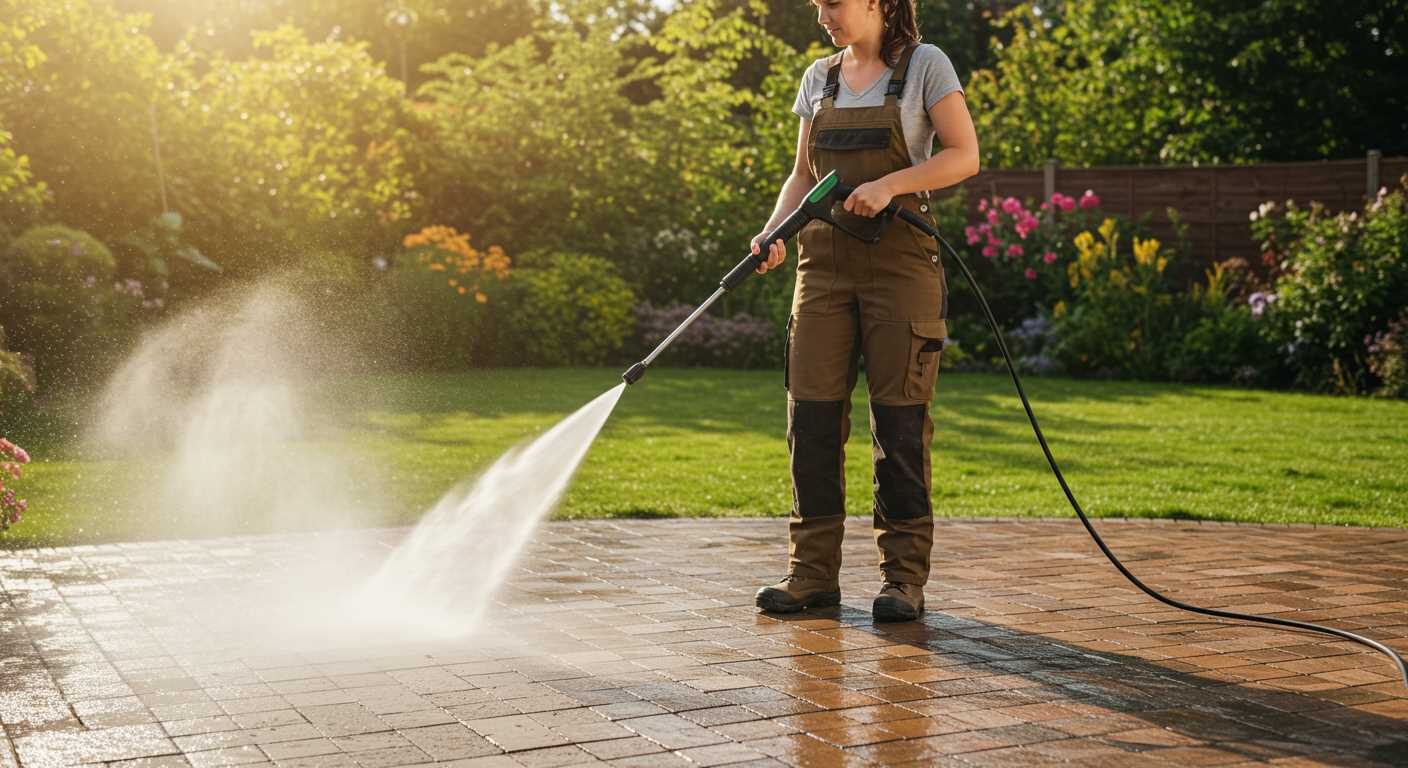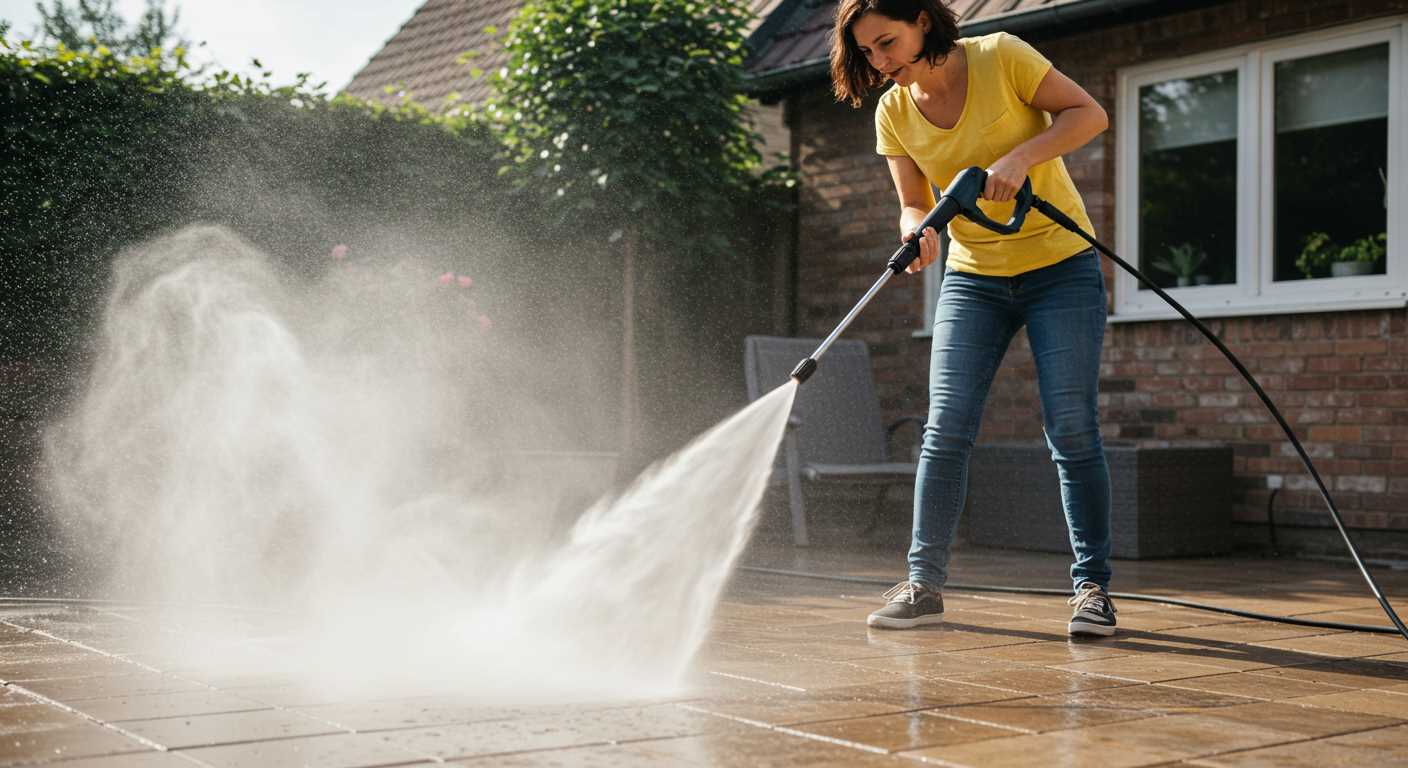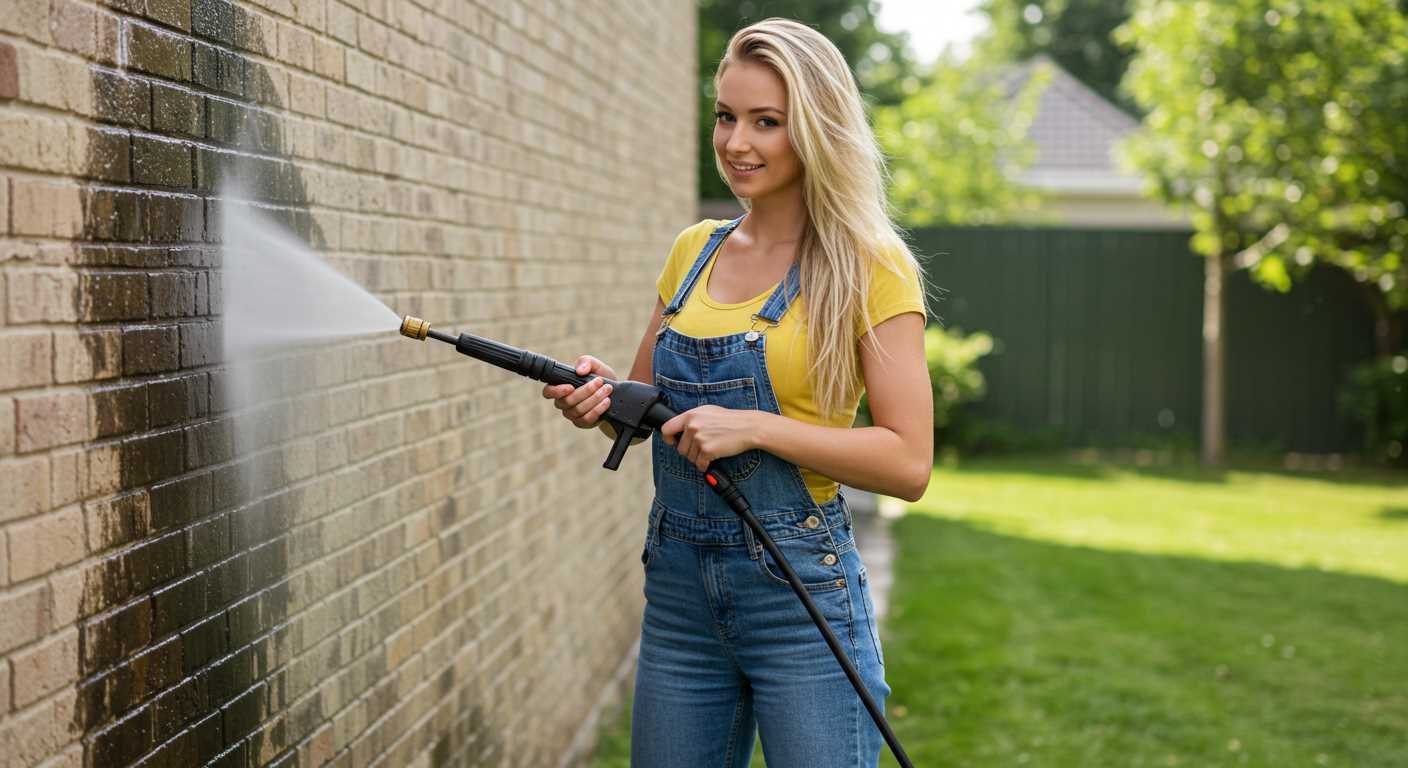




Begin with a thorough rinse, ensuring any loose dirt or debris is dislodged. I always recommend starting from the top and working your way down. This method prevents grime from being pushed down onto already cleaned surfaces. A nozzle with a wide spray pattern is ideal for this initial step, as it covers a larger area without the risk of damage.
Next, prepare a suitable detergent for automotive surfaces. Make sure to choose a product specifically formulated for vehicles to avoid any adverse reactions with the paint. Apply the solution using a low-pressure setting, allowing it to sit for a few minutes to break down stubborn contaminants. I’ve seen countless times how a little patience goes a long way in achieving a spotless finish.
After the detergent has had time to work its magic, it’s time to rinse again. Switch to a narrower nozzle for this phase, focusing on each section methodically. Keep the nozzle at a safe distance to prevent any damage to the paintwork. During my years of experience, I’ve learned that maintaining a distance of about 30 cm is a safe bet, especially around sensitive areas like mirrors and emblems.
Finally, don’t forget to dry the surface properly. I often recommend using a microfiber towel, as it absorbs moisture effectively and reduces the risk of scratches. This final touch not only enhances the appearance but also helps prevent water spots from forming. Trust me, a well-maintained vehicle not only looks great but also retains its value over time.
Choosing the Right Equipment for Vehicle Maintenance
Opt for a unit with a range of 1200 to 1900 PSI for optimal results. This level provides sufficient force to remove dirt without risking damage to delicate surfaces. In my experience, models within this range strike the right balance between power and safety.
Additionally, consider the flow rate, typically measured in litres per hour (LPH). A flow rate of 350 to 500 LPH is ideal for thorough rinsing and effective removal of grime. I’ve found that higher flow rates contribute to a quicker cleaning process, which is especially useful on larger vehicles.
Nozzle Selection
Invest in a variety of nozzles for versatility. A 25-degree nozzle is perfect for general washing, while a 40-degree option is gentler and suitable for sensitive areas like painted surfaces. I often switch between these nozzles depending on the level of dirt; the right attachment makes a noticeable difference in the outcome.
Portability and Storage
Choose a lightweight, compact model if space is limited. A portable design simplifies manoeuvring around your vehicle and ensures easy storage. I’ve often opted for smaller units when I lack garage space, and they’ve proven to be surprisingly powerful for everyday tasks.
Preparing Your Vehicle and Workspace for Pressure Washing
Before tackling the task, ensure your vehicle is parked in an open area with adequate drainage. This helps prevent water pooling and potential flooding. If possible, choose a surface that doesn’t absorb moisture, such as concrete or paving stones. If you need equipment for patio stone pressure washing, check out this guide.
Remove any personal items from the interior and exterior to avoid damage. This includes mats, personal belongings, and any detachable accessories. Secure loose items, such as mirrors and antennas, to prevent them from being dislodged during the cleaning process.
Inspect the vehicle for any pre-existing damage, such as scratches or dents. It’s wise to document these before starting. This way, if any issues arise during the process, you have a reference point.
Gather all necessary materials: a suitable detergent, brushes, and cloths for drying. If you plan to tackle tougher stains, consider the best chemical for pressure washing concrete to help lift grime effectively.
Set up your workspace with power sources and water supply easily accessible. Avoid clutter around the area to maintain safety and efficiency. Lastly, wear appropriate protective gear, such as goggles and gloves, to safeguard against splashes and chemicals.
Techniques for Applying Detergent and Rinsing
For optimal results, begin with a dedicated detergent applicator or foam cannon. I’ve found that using a foam cannon allows for even distribution and a thick layer of suds, which clings to the surface better than a simple spray. Fill the cannon with a pH-neutral detergent designed for automotive finishes; this helps to lift dirt and grime without damaging paintwork.
Adjust the foam cannon to the desired setting to achieve the right consistency. A thicker foam adheres longer, providing more time for the product to penetrate tough stains. While applying, work from the bottom up to avoid streaking. Allow the foam to dwell for a few minutes, but avoid letting it dry out, as this could lead to residue.
For rinsing, switch to a wide-angle nozzle. I recommend a 25-degree or 40-degree nozzle to prevent any risk of damaging the paint. Start rinsing from the top and work your way down, ensuring that you remove all detergent and grime thoroughly. Maintain a distance of about 2 to 3 feet from the surface to prevent any high-pressure impact that might cause damage.
After the initial rinse, it’s beneficial to follow up with a second rinse using a lower pressure setting. This helps to ensure that any remaining detergent is fully washed away. Pay special attention to areas around trim and badges where soap can hide, as these spots often require a bit more attention.
As a final touch, I like to use a rinse aid or wax in the last rinse cycle. This not only helps with water spotting but also adds a layer of protection to the finish. Remember to dry the surface with a soft microfiber towel afterward to prevent water marks and enhance shine.
Avoiding common mistakes while pressure washing your car
Avoid the temptation to get too close to the surface with the nozzle. A distance of at least 2 feet is advisable to prevent damage to the paint. I recall a time when I was too eager, and the result was a nasty scuff on my vehicle that took hours to polish out.
- Neglecting the rinse: Failing to rinse off detergent thoroughly can leave streaks and residue. Always inspect the surface after rinsing to ensure all soap is removed.
- Ignoring the wind: Wind can carry debris and soap back onto the surface. Choose a calm day or position your vehicle to minimise the impact of gusts.
- Using high pressure on delicate areas: Areas like headlights and windows are more susceptible to damage. Use a wider spray pattern or lower pressure settings when cleaning these sections.
- Not pre-rinsing: Skipping the pre-rinse can lead to dirt being blasted against the paint, causing scratches. A quick rinse removes loose debris.
- Overloading the detergent: More soap does not mean better results. Too much detergent can create excessive foam, making rinsing difficult. Stick to the recommended dilution ratios.
Invest in a good quality nozzle that allows for adjustments. A variable nozzle can help transition between different spray patterns, which is particularly handy for varying surfaces.
- Check the manufacturer’s guidelines before starting; they often provide specific recommendations for maintenance.
- Keep an eye on the equipment’s maintenance schedule. Regular checks can prevent malfunctions that might lead to accidents or damage.
Finally, always keep a cloth handy for quick touch-ups. It’s a small detail, but it makes a significant difference in achieving a pristine finish.
Post-cleaning care and maintenance tips
After giving your vehicle a thorough wash, focus on protecting its surfaces and maintaining the results. Start with drying the exterior using a soft microfiber towel. This prevents water spots and streaks, ensuring a flawless finish. I remember my first time using a chamois; it was a game changer for achieving that showroom shine.
Waxing and Sealing
Applying a good quality wax or sealant is crucial. It not only enhances shine but also adds a layer of protection against dirt and UV rays. I’ve experimented with various brands, and the difference in longevity and shine is remarkable. A tip: apply in small sections and buff off before it dries completely for the best results.
Interior and Wheel Care
Don’t neglect the interior. Vacuuming and wiping surfaces with a gentle cleaner keeps everything looking fresh. For wheels, a dedicated wheel cleaner and brush can help remove brake dust and grime that accumulates. I learned the hard way that neglecting this step leads to more work down the line.
Regularly check and top up fluids, including washer fluid and engine oil. This ensures everything remains in optimal condition. Lastly, consider a routine detailing schedule; it’s a simple way to keep your vehicle looking its best with minimal effort.






.jpg)


